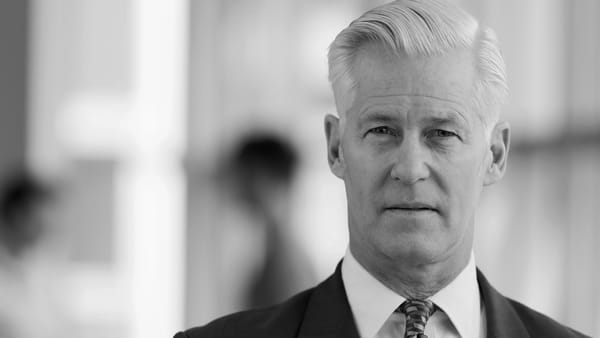How to Master Storytelling for Executive Interview Success
Done right, stories are a powerful tool.

Mastering the art of storytelling is critical in many aspects of business, and it rings especially true in executive interviews. A well-crafted story taps into emotions, building a far deeper personal connection with the listener.
Put simply, stories stick.
Business is about more than numbers and metrics. The people, the challenges and the journey matter just as much, and a well-told story captures these elements in a way that a resume never can. Stories resonate and leave a lasting impression, which is exactly what you want in a competitive hiring process.
The Art of a Good Story
How do you tell a story that sticks? The answer is in structure.
First, you need to understand the impression you want to give. This will vary depending on the context of the role, company and their situation. Do you need to show that you're hands-on and have been in the trenches? Strategic? A team builder?
This impression will guide how your story comes across and it sets the boundaries for what you choose to talk about.
Then, use a simple framework:
- Context
- Challenge
- Turning Point
- Impact
- Question
Context: Set the stage
Ground your interviewer in the situation. The context should provide a clear understanding of the environment, your role and the key stakeholders involved. The aim is to deliver just enough detail to make the story relatable and relevant to the company’s current situation.
Example:
“We had just closed our Series A. The product was strong, but we were under intense pressure from investors to quickly scale revenue and market share in a highly competitive space. We were sitting at $5 million ARR but needed to reach $15 million in the next 18 months to meet investor expectations."
Keep the context concise. Over-explaining the backdrop can lose your audience.
Challenge: Define the obstacle
Every great story needs tension, and here’s where you define the obstacle or problem you faced. This is a critical moment to show you’ve been there, dealing with real-world challenges that executives are expected to navigate.
Use empathy to show you understood the pressures and frustrations involved. This humanizes you and builds a connection with the interviewer.
Example:
"Our go-to-market strategy was fragmented. We lacked a clear differentiation from competitors, and our lead generation was inconsistent. The sales team was overwhelmed, juggling too many small deals that weren’t moving the needle, while we struggled to land larger enterprise contracts that would drive faster ARR growth."
Turning Point: Highlight Your Intervention
The turning point is where you as the leader made a decisive move. This is where your executive decision-making, foresight and ability to navigate complexity come through. Make sure to show the stakes of the decision and why your leadership was crucial, balancing I with We.
Example:
"I realized we needed an entirely fresh approach. I spent time with current users and potential customers to understand their pain points. I rebuilt the marketing function from the ground up. We redefined our unique selling proposition, focusing on positioning ourselves as the premium solution in the market. I streamlined our sales process to prioritize high-value accounts and introduced a new enterprise sales team."
Impact: Show tangible results
Results matter. Highlight the tangible outcomes of your actions. Be specific about the impact you had on the business, whether it’s increased revenue, market share, cost savings - whatever it may be.
Example:
“In the first twelve months, we increased ARR from $5 million to $13.5 million, primarily driven by landing big enterprise deals. Our lead quality improved by 40%, and our average deal size doubled. This momentum helped ease investor concerns and positioned us strongly for a successful Series B."
The impact should connect directly to the company’s goals. Numbers are crucial, but don’t overwhelm with data. Focus on a few key metrics that resonate with the company’s current objectives.
Question
This is where most candidates miss a powerful opportunity. Finish with a question that turns the conversation back to the interviewer and explains why your story is relevant. Don’t leave it to chance and hope the hiring manager finds the alignment naturally.
“You’re at similar stage, and it's been tough in the enterprise market. Can you see a similar approach working for you?
This gets them talking, it gives you more information for your arsenal and it allows you to weave in more insight.
Use Empathy to Connect the Dots
Executives who understand the human elements behind business decisions are more compelling storytellers. Empathy allows you to go beyond the surface and show that you’ve considered how your actions impact employees, customers and stakeholders.
Empathy also helps build rapport with the interviewer, as they’ll feel you’re attuned to the challenges that matter to them.
Weave empathy naturally into your narrative. Don’t make it sound forced - show how it was integral to your decision-making and leadership style.
“Pressure from our investors was huge - I guess you’ve felt the same!”
Speak in Your Natural Tone
Scripted answers can make even the best story fall flat. Aim to speak in a natural, conversational tone, ensuring your passion and authenticity come through.
While preparation is important, flexibility in delivery allows you to adapt to the interviewer's responses and questions.
Practice your stories enough that you know the key points, but leave room for spontaneity. This keeps your delivery engaging and avoids sounding robotic.
The Bottom Line
Done right, stories are a powerful tool. However, preparation is key, and it’s not enough to rely on just one story. That means thinking ahead about the types of stories that will best highlight your strengths in different scenarios. You want to be ready for any question that comes your way and have a few stories in your arsenal.





